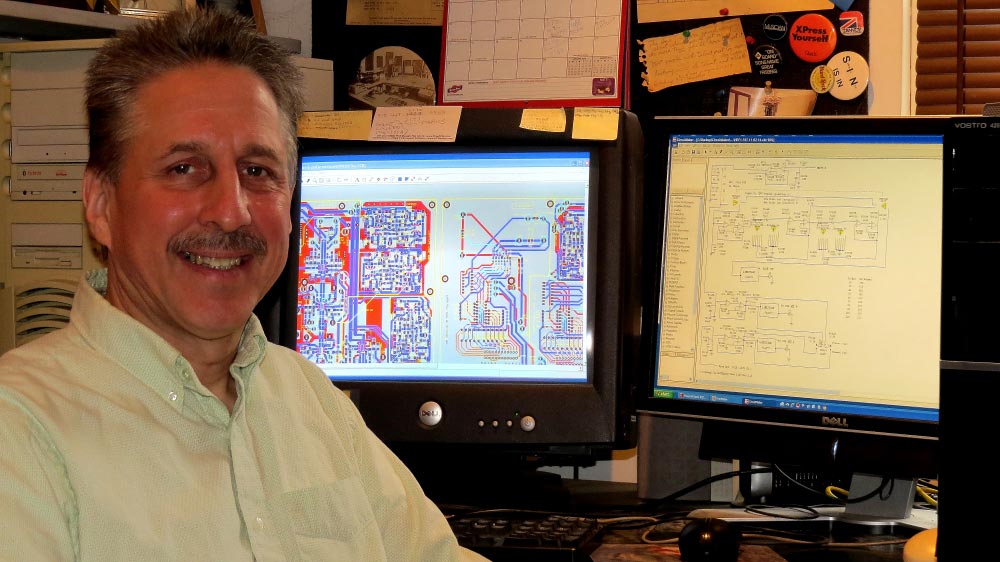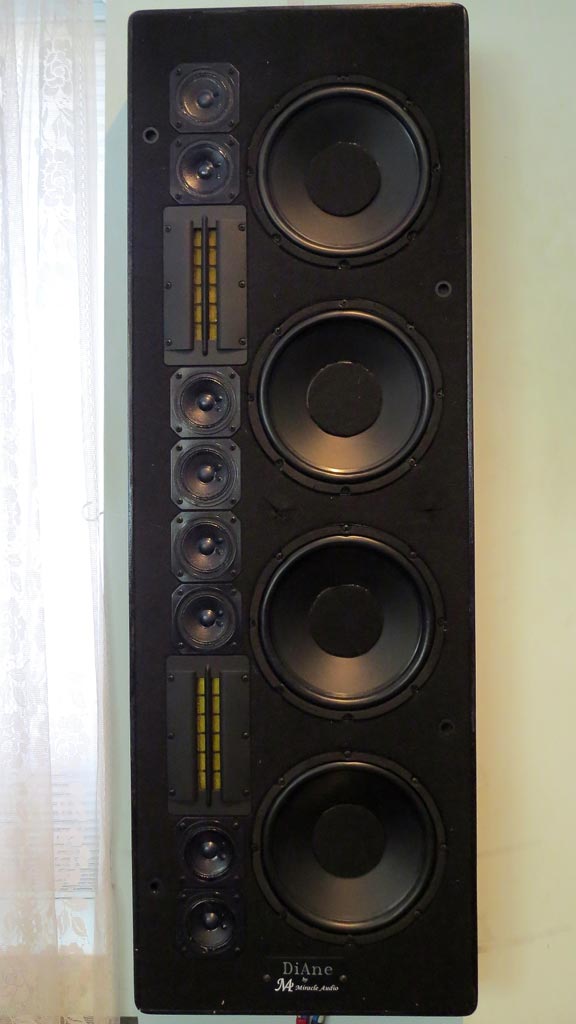LB: Mark, welcome to Dagogo. I know that music has played a prominent role in your life. Please tell us some of the highlights.
MK: It’s good to be here Larry, and thanks for the opportunity to talk about myself, and my designs for Miracle Audio.
My musical career began with accordion lessons when I was eight years old, solely because my older cousin John, according to my parents, “Played such wonderful Polkas on his accordion.” My sister got the piano lessons that I wanted, but I eventually sat down regularly at her piano and taught myself to play, this so I could be a rock star. I bought a Vox Continental organ, learned In-A-Gadda-Da-Vida, then a Hammond organ and studied all the great keyboardists of my generation: Emerson, Wakeman, Argent, Rollie, Manzarek etc., and put myself through Aaron Copland School of Music with a BA degree in composition and conducting, by playing in various bands.
After graduation I conducted revivals of some famous musicals and directed a few NY area church choirs. In my spare time I built a home recording/production studio and won bids to compose a few small commercials and industrial film scores. This led to playing keyboards on TV and radio commercials and many rock, pop and R&B albums in the 80’s. It also gave me an opportunity to see most of the major recording studios in NYC, and learn the recording process.
In 1986, I designed and constructed the NY Music Deli, my own recording/production facility in Manhattan. For the ensuing twelve years I was involved in the production and recording of many genres of music. I have since designed and/or built five more recording facilities.
LB: You’ve certainly had an impressive and versatile career in music production and studio design. How did you gain experience and expertise in electronics, in particular as it pertains to high-end audio equipment for musical reproduction?
MK: My fascination with electronics began at age 7 when I pulled a toaster out of our trash can, repaired it and put it back on the kitchen counter where it continued to function for 2 more years.
All through grammar and high school, I read every book and periodical (about electronics) in every library that I could get my hands on. We lived near a landfill where there was always a new TV, radio or appliance to cannibalize and use to build all sorts of projects. I also built many kits from Eico, Heathkit and Dynaco including a short wave radio, oscilloscope, DVM, ST-120 amps and PAT-5 preamp.
Mid way through high school (1972) my interests were primarily music and electronics so I began building modular synthesizers using the famous LM-301 opamp and the SSM IC’s (http://en.wikipedia.org/wiki/CEM_and_SSM_chips_in_synthesizers) This is also when I learned the importance of a great power supply design. The tuning stability of early synths was atrocious. By building a supply with extra current, better AC filtering and strong regulation I was able to lessen the voltage drift by half.
After college and between conducting/composing gigs I worked for a major alarm company helping with designs for an anti-terrorist alarm at JFK airport, and for the first wireless (cellular) reporting central station. (It’s OK. In 1980 I didn’t know about cellular either until I was on the project.)
Once I became a recording studio owner, my hands-on electronics was limited to repairs of various types of recording equipment, ironically most of which contained opamps. And so as I became very familiar with their functions and implementation, especially with respect to audio reproduction, the logical progression once I sold the studio, was to use them in my own hi-end audio designs.
Larry, I would like to add that designing over the last ten years has been so much easier than when I was a kid due specifically to the internet. Today there is a thousand times more useful information available at my fingertips, including other designers, engineers, manufacturers and music lovers all willing to help. I would like to thank each and every one of them, and suggest to the younger generation that they tap into these resources constantly instead of wasting their lives X-boxing, Tweeting and Friending. I can’t even imagine the state of hi-end audio today if the present-day pioneers had the Internet to help them with their early designs.
- (Page 1 of 7)
- Next page →




After reading that you would think everybody needs to hear these speakers & amplifier.